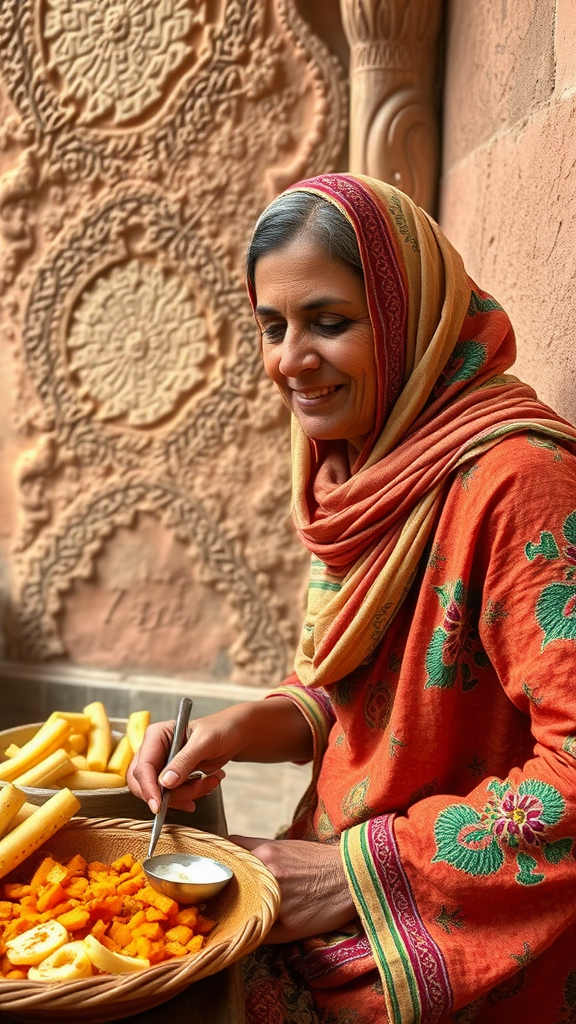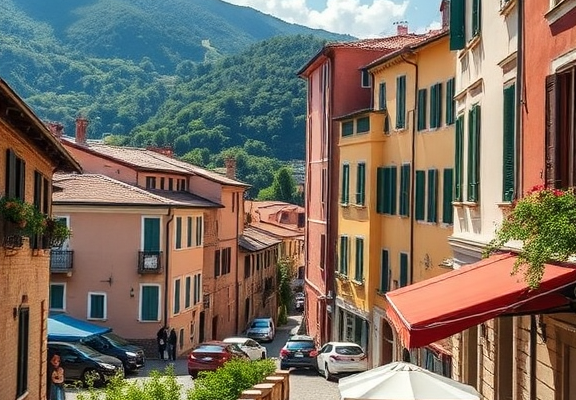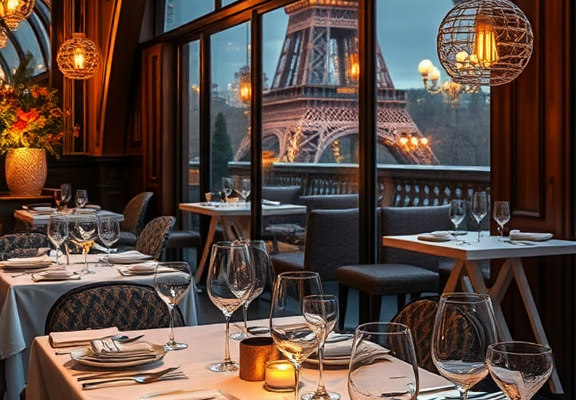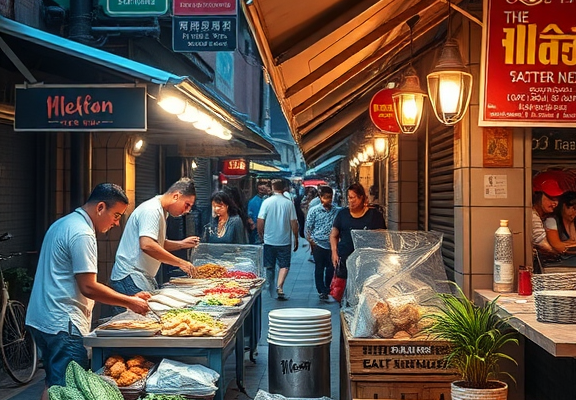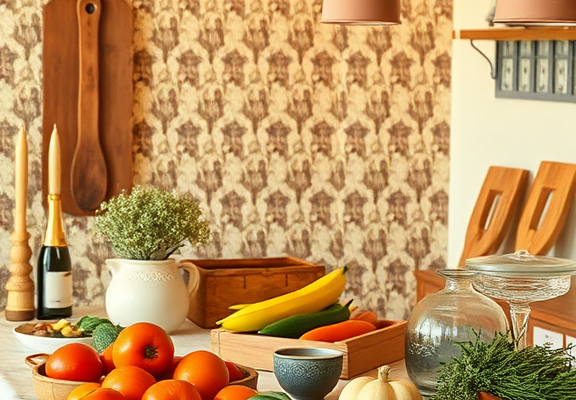Cultural Food Experiences in Morocco: A Culinary Journey Through Tradition and Flavor
Morocco is a treasure trove of flavors, colors, and aromas that come together to create a vibrant culinary scene. When you think of Moroccan food, think beyond just eating. It is a cultural experience that tells the story of its rich history and diverse influences from Berber, Arab, and Mediterranean traditions. From bustling markets to family kitchens, every bite is a journey through tradition and flavor.
Thank you for reading this post, don't forget to subscribe!One of the most iconic dishes you will encounter is tagine. This slow-cooked stew, named after the earthenware pot it’s cooked in, comes in a variety of flavors. Whether you prefer lamb, chicken, or a vegetarian mix, the unique combination of spices—like cumin, coriander, and saffron—makes every dish special. Sharing a tagine with loved ones is a cherished ritual, showing the close-knit community spirit that is central to Moroccan dining.
To truly appreciate the culinary diversity, make sure to indulge in traditional harira. This soup, often served during Ramadan, is a hearty mixture of tomatoes, lentils, chickpeas, and spices. It is not just a meal; it’s a symbol of hospitality. When you visit a Moroccan home during the holy month, expect a warm bowl of harira to break the fast, bringing everyone together around the table and reinforcing bonds of family and friendship.
Another must-try experience is the Moroccan breakfast. It often includes a spread of fresh bread, honey, olives, and dairy products. Pair these with sweet mint tea, and you’re in for a delightful start to your day. Don’t miss out on msemen, a flaky, layered pancake that can be enjoyed plain or filled with delicious ingredients. This is a breakfast experience that reflects the warmth and generosity of Moroccan culture.
Street food is a significant part of the Moroccan culinary landscape. As you stroll through the vibrant souks, the enticing smells will guide you to various food stalls. Sample local delights such as:
- Brochettes: Grilled skewers of meat, marinated in spices and cooked to perfection.
- Moroccan sandwiches: Often filled with spicy sausage or kebabs, served fresh and warm.
- Mint tea: The beloved drink of Moroccans, sweetened and served ceremoniously, it’s a social event in itself.
- Sfenj: These deep-fried doughnuts are often enjoyed for breakfast or as a snack.
Visiting a local souk offers not just food but also an exploration of the vibrant culture. The market vibrates with life, shoppers haggle over spices, and vibrant textiles are showcased. Participating in this lively environment enhances your culinary experience, connecting you not just to food, but to the heart of Moroccan society.
What makes Moroccan food truly unique is its generous use of spices. The country is famous for its spice markets, where you can find an array of ingredients like ras el hanout—a fragrant spice blend that varies by region. Creating a dish using these authentic spices at home will transport you back to the vibrant streets of Morocco with every bite.
Another remarkable experience is a traditional Moroccan feast known as a mechoui. Often reserved for special occasions, whole lamb is spit-roasted and served with a variety of salads and breads. This communal dining experience engages everyone and introduces you to the culture of sharing food in Morocco.
The dessert segment is equally enticing. Don’t leave without trying local pastries such as baklava or kaab el ghazal, which are almond-filled pastries with distinctive shapes and flavors. To top it all off, a cup of aromatic Moroccan mint tea makes for a comforting end, symbolizing friendship and hospitality.
Your culinary journey through Morocco is more than just tasting food; it’s about engaging with the traditions, family values, and the stories behind each dish. By participating in cooking classes or dining in local homes, you deepen your understanding of not only Moroccan cuisine but the very heart of its culture. This vibrant experience is sure to leave you with cherished memories and a yearning for more of Morocco’s rich culinary heritage.
The Role of Moroccan Spices in Enhancing Food Culture and Culinary Identity
In Morocco, food is more than just sustenance; it is a vibrant expression of culture, history, and identity. At the heart of this culinary richness are the spices that define Moroccan cuisine. These spices not only enhance the flavors of dishes but also carry stories of heritage, tradition, and the diverse influences that shaped Moroccan food culture over centuries.
When you think of Moroccan cuisine, fragrant spices come to mind. The country is famous for its unique spice blends that are used in various dishes. Each spice not only adds flavor but also contributes to the distinctive taste that makes Moroccan food so special. Understanding the role these spices play can deepen your appreciation of Moroccan culinary arts.
Key Spices in Moroccan Cuisine
Several spices stand out in Moroccan cooking. Some of the most notable include:
- Cumin: Known for its warm and earthy flavor, cumin is a staple in many Moroccan dishes, providing depth to tagines and couscous.
- Coriander: Both whole seeds and powdered coriander are commonly used, imparting a citrusy flavor that brightens up heavier dishes.
- Cinnamon: Often associated with sweetness, cinnamon is not limited to desserts in Morocco; it also enhances savory dishes like tagine, creating a balance of flavors.
- Ginger: This spice adds a warm and slightly peppery zing, commonly found in stews and marinades.
- Saffron: As one of the most expensive spices in the world, saffron lends a rich color and a distinct taste to Moroccan rice dishes and tagines.
- Paprika: This spice offers a mild heat and vibrant color, often used for seasoning meats and vegetables.
These staples form the backbone of many dishes, but Moroccan cooks often create custom blends, like Ras el Hanout, which can contain up to 30 different spices. This unique blend showcases the cook’s creativity and regional influences, making every preparation a personal touch of culinary art.
Spices and Cultural Identity
The use of spices in Moroccan cooking speaks volumes about the country’s history as a crossroads of cultures. For centuries, Moroccan cuisine has absorbed influences from Arab, Berber, and Mediterranean traditions, as well as from the African coast and beyond. As traders traveled along ancient trade routes, they brought with them various spices that were integrated into local culinary practices.
This blend of cultures is reflected in how spices are not just ingredients but a means of storytelling. They connect the past with the present, allowing people to experience the rich heritage of Morocco with every meal. When you enjoy a Moroccan dish, you are partaking in a tradition that spans generations.
The Ritual of Sharing Food
In Morocco, food is often served communally, fostering a sense of togetherness and celebration. Spices play a crucial role in this experience. The act of sharing a meal seasoned to perfection can create bonds between family and friends. Traditional tagines or couscous are often placed in the center of the table, encouraging everyone to gather around and enjoy the feast.
Moreover, many Moroccan families have their own spice mixes passed down through generations. This creates a personal touch that is unique to each household, fostering a deeper connection to culinary traditions. You might find that a dish tastes different depending on the spices used, reflecting the individuality of each cook.
Cooking with Spices at Home
If you want to bring a touch of Morocco into your kitchen, consider experimenting with these spices in your own cooking. Here are some simple ways to get started:
- Add a pinch of cumin or coriander to your vegetable dishes for added depth.
- Use saffron in your rice or couscous dishes to elevate the flavor and make it visually stunning.
- Create your own spice blend akin to Ras el Hanout to capture the essence of Moroccan cuisine.
- Don’t shy away from mixing sweet and savory; try cinnamon in your stews or savory dishes for a unique twist.
Exploring the world of Moroccan spices opens up a culinary adventure that enriches not only your meals but also your understanding of Moroccan culture and identity. Each sprinkle carries a piece of history, a flavor of tradition, and an invitation to gather and celebrate with loved ones.
Conclusion
Exploring cultural food experiences in Morocco is like embarking on a flavorful journey that highlights the very essence of its rich tradition. From bustling markets to intimate family meals, each dish tells a story and connects you to the heart of Moroccan life. The diverse array of ingredients and recipes reflects the influences of various cultures, including Berber, Arab, and French, creating a melting pot of flavors that one simply cannot resist.
One of the most remarkable aspects of Moroccan cuisine is the use of spices. They are not just flavor enhancers but also carry historical significance, enhancing the identity and spirit of the dishes. The exotic aromas of saffron, cumin, and cinnamon, for example, bring warmth and depth to meals while influencing the social gatherings around food. This culinary tapestry unfolds during celebrations and everyday life, making every meal a festival of flavors.
You’ll find that every experience in a Moroccan kitchen or food market is more than just a meal; it is an opportunity for connection and tradition. Engaging with local culinary practices opens your eyes to the culture’s values, hospitality, and artistry. Embracing Moroccan food not only excites the palate, but it also invites you to appreciate the deeper meanings behind each bite.
Whether you’re savoring a tagine or trying fresh mint tea, you are partaking in a tradition that spans generations. Ultimately, delving into Morocco’s culinary culture is an invitation to create memories that linger long after the last bite has been taken. Embrace this journey, and allow the flavors and stories to enrich your understanding of this vibrant nation.

